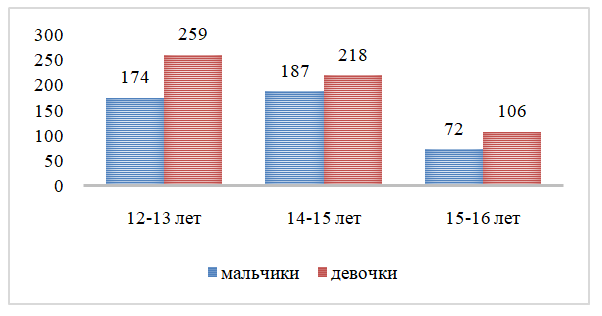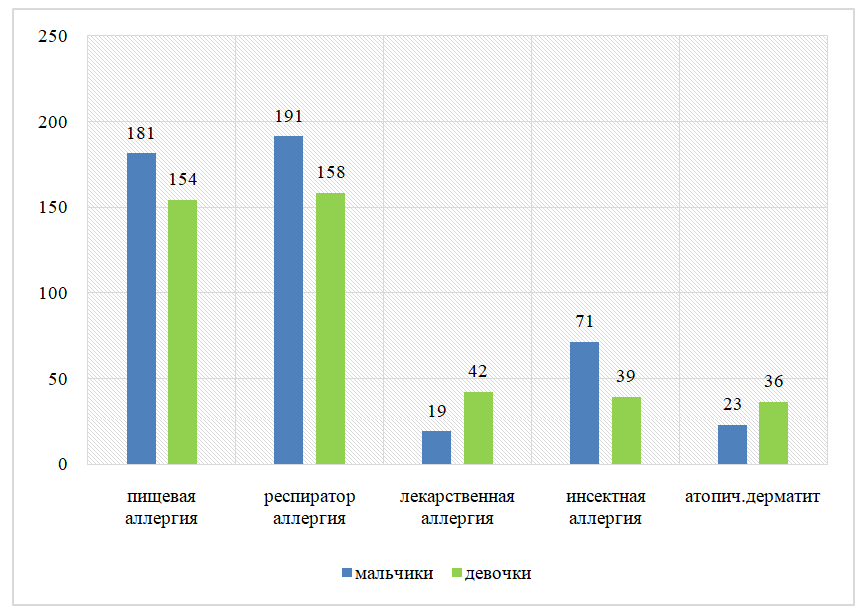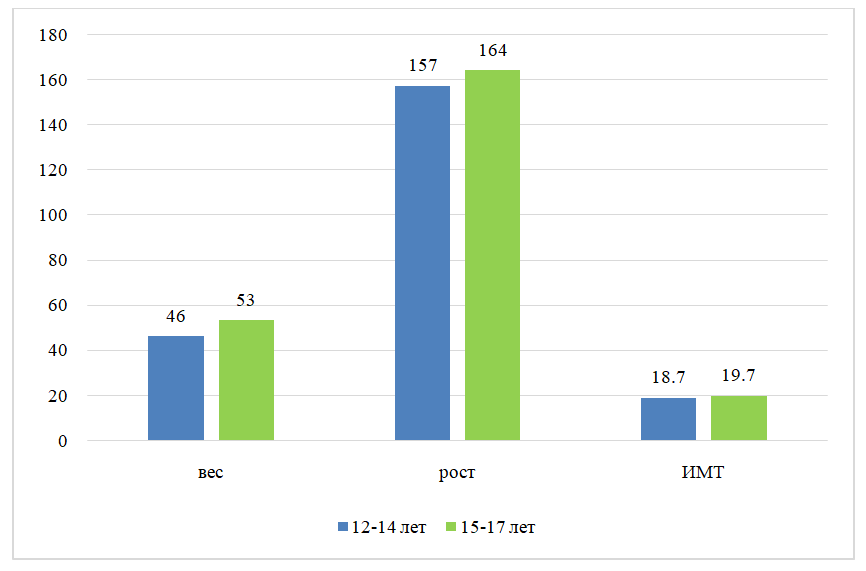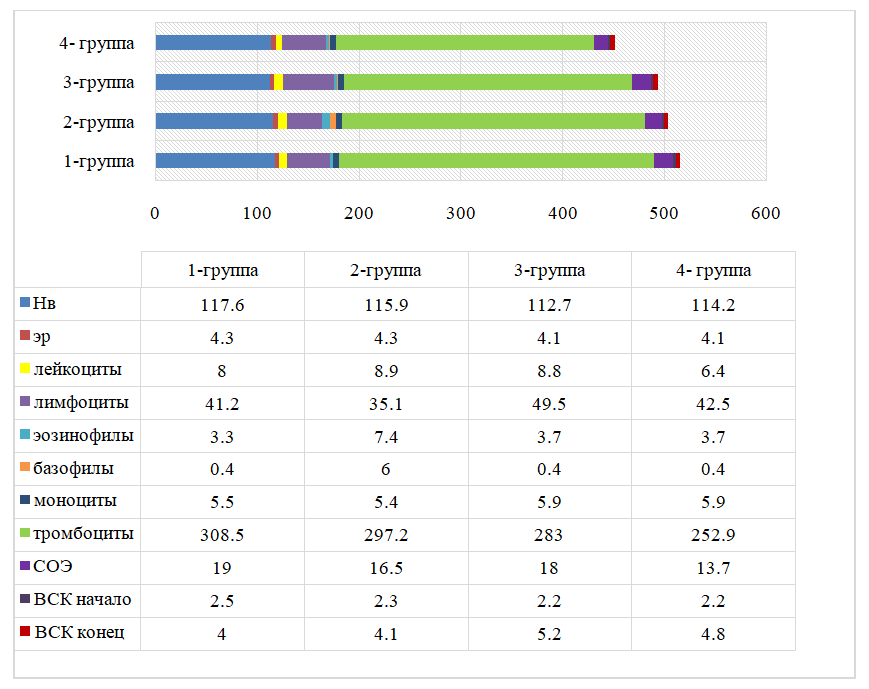Rasulova Saodat Khalimovna, Navruzova Shakar Istamovna
Bukhara State Medical University, Bukhara, Uzbekistan
Copyright © 2024 The Author(s). Published by Scientific & Academic Publishing.
This work is licensed under the Creative Commons Attribution International License (CC BY).
http://creativecommons.org/licenses/by/4.0/

Abstract
The article is devoted to the development of a method for differentiating irritable bowel syndrome in schoolchildren of puberty, depending on allergic sensitization, which is of great importance for health authorities protection in the organization of specialized pediatric and therapeutic services. The proposed method promotes early diagnosis and prevention of the development of irritable bowel syndrome in children, which is of important practical importance.
Keywords:
Irritable bowel syndrome, Allergic sensitization, Puberty, Schoolchildren
Cite this paper: Rasulova Saodat Khalimovna, Navruzova Shakar Istamovna, Differential Diagnostics of Irritable Bowel Syndrome Depending on Allergic Sensibilization, American Journal of Medicine and Medical Sciences, Vol. 4 No. 2, 2024, pp. 306-309. doi: 10.5923/j.ajmms.20241402.31.
1. Introduction
Functional bowel diseases (FBD) are part of a large group of diseases related to the functional pathology of the gastrointestinal tract (GIT), and are very widespread throughout the world. These disorders affect all segments of society, regardless of gender, age, race, religion, skin color or socioeconomic status [1,3]. The relevance of the ongoing active process of studying these nosological forms over the past decades is dictated not only by a significant decrease in the quality of life of patients, but also by significant damage to the global healthcare system due to direct and indirect costs of their treatment. The achievements of fundamental and clinical science over the past 10 years in the study of the epidemiology, etiology, pathophysiology, diagnosis and therapy of FCD have necessitated a revision of the Rome III criteria that have existed since 2006. In May 2016, the global gastroenterological community became familiar with the Rome IV criteria at the American Gastroenterology Week; the main provisions of the consensus have already been published [2,4,7]. It should be noted with regret that the hopes placed for a significant scientific breakthrough in understanding the essence of the functional pathology of the gastrointestinal tract were not entirely justified and practicing gastroenterologists around the world still do not have universal tools in their hands for the supervision of such patients. However, with the release of updated criteria, internists have in their arsenal modern, constantly adapting clinical recommendations that determine the vector of clinical thinking in cases of both diagnosis and choice of treatment methods [5,6].Purpose of the study:development of a method for differentiating irritable bowel syndrome in schoolchildren of puberty, depending on allergic sensitization.
2. Materials and Research Methods
A questionnaire survey of schoolchildren from 4 districts and the city of Bukhara was conducted. 1016 schoolchildren of puberty age took part in the survey, of which there were slightly more girls - 571 (56.2%) than boys - 445 (43.8%). The age structure consisted of 433 (42.6%) children aged 12-13 years, 405 (39.8%) children aged 14-15 years and 178 (17.6%) children aged 16-17 years, Fig.1. | Figure 1. Age and sex structure of surveyed schoolchildren |
It was found that among all the schoolchildren surveyed, 530 (52.2%) had IBS. Of these, 275 (51.8%) suffer from chronic constipation, and 255 (48.2%) schoolchildren periodically experience diarrhea.At the same time, 47.4% of patients experience abdominal pain while staying at home, and 41.5% of schoolchildren experience abdominal pain while staying at school. Only 11.1% of schoolchildren do not have abdominal syndrome.When distributing patients with chronic constipation by gender, a predominance of girls was revealed - 157 (57.1%) than boys - 118 (42.9%). And among children with diarrhea, there were 2.8 times fewer boys - 67 (26.3%) than girls - 188 (73.7%).Of all (1016) schoolchildren examined, children born prematurely accounted for -45 (4.4%). There were 758 (74.6%) children who were exclusively breastfed.The study of anamnesis and conversation with parents of schoolchildren made it possible to clarify the spectrum of allergic sensitization among the surveyed teenage schoolchildren. It was established that of all the surveyed (1016) schoolchildren, 914 (89.9%) have allergic sensitization of one nature or another.The spectrum of allergic sensitization showed that among all (914) students, adolescents with sensitization, schoolchildren with:- food allergies account for 335 (36.6%),- respiratory (pils and pilus) allergies -349 (38.2%),- drug allergy - 61 (6.7%),- insect allergies (wasp, mosquito bites) - 110 (12.1%),- atopic dermatitis - 59 (6.5%), Fig. 2. | Figure 2. Spectrum of allergic sensitization in IBS in adolescents |
For differential diagnosis of clinically similar symptoms of food allergies and IBS in adolescents, there is a need to conduct immunological tests.In order to study the immunological parameters of blood and saliva, 140 students were selected from among those surveyed. The ratio of boys and girls was 1:1. Of these, there were 70 (50%) teenagers aged 12-14 years old, and 70 (50%) aged 15-17 years old.The distribution of selected schoolchildren by type of IBS showed approximately the same ratio of occurrence of constipation - 72 (51.4%) and diarrhea - 68 (48.6%).Regardless of the clinical form of manifestation, IBS, both the diarrheal form (72.4%) and constipation (64.5%), predominates in girls in adolescence. This may be due to the frequency of visits to the doctor rather than the result of a true difference in frequency.An assessment of the physical growth and development of schoolchildren selected for the examination showed the average height of schoolchildren aged 12-14 years to be 157.76±1.28 cm, weight was 46.0±1.1 kg. And the height and weight indicators for schoolchildren aged 15-17 years is 164.82±0.84 cm and 53.72±0.97 kg, respectively, Fig. 3. | Figure 3. Indicators of physical growth of adolescents |
For the convenience of comparative assessment of the studied indicators, the selected schoolchildren were divided into 4 groups:Group 1 - 35 schoolchildren with IBS in combination with food allergies (FA);Group 2 - 35 schoolchildren with IBS in combination with respiratory allergies;3rd group-comparative 35 schoolchildren with IBS without allergies;4-group - 35 health schoolchildren aged 12-17 years.We conducted studies of immunological blood parameters and determined the level of secretory IgA in saliva in schoolchildren selected for examination.A comparative analysis of the obtained results was carried out to differentiate IBS in schoolchildren depending on allergic sensitization. The results of the study revealed the absence of significant distinctive changes in peripheral blood parameters in schoolchildren with IBS. | Figure 4. Comparative characteristics of blood parameters in schoolchildren |
To differentiate pathological conditions, it is important to take into account the state of biochemical blood parameters in IBS. For this purpose, we carried out the analysis in a comparative aspect and revealed characteristic shifts in the studied parameters in adolescents with IBS depending on allergic sensitization.Thus, analysis of the spectrum of sensitization in IBS in adolescents showed average reactivity to the allergen of a mixture of vegetables, weeds and meadow herbs, as well as a food mixture.
3. Conclusions
1. The frequency of IBS in children of puberty is 52.2%. IBS in adolescents is clinically manifested in 47.4% of adolescents by abdominal pain while staying at home; in 41.5% of schoolchildren, abdominal pain is noted while staying at school. 11.1% of school children do not have abdominal syndrome.2. It has been established that IBS in adolescents in 89.9% of cases occurs against the background of allergies: - food allergy - 36.6%, respiratory (pill and pilus) allergy - 38.2%, drug allergy - 6.7%, insect allergy allergies (to wasp bite, mosquito bite) - 12.1% and atopic dermatitis -6.5%. A higher reactivity of the body of pubescent schoolchildren with IBS to allergens has been established: - fish, mixtures of vegetables and food mixtures (almonds, tomatoes, oranges, strawberries, kiwis, lamb, banana, peach).
References
| [1] | Collado MC, Rautava S., Aakko J., et al. Human gut colonization may be initiated in utero by distinct microbial communities in the placenta and amniotic fluid // Sci Rep. 2016; 6: 23129. DOI: 10.1038/srep23129. 22. Di Giulio DB Diversity of microbes in amniotic fluid // Semin Fetal Neonatal Med. 2012; 17 (1): 2–11. DOI: 10.1016/j.siny.2011.10.001. |
| [2] | Dankers W., Colin EM, van Hamburg JP, Lubberts E. Vitamin D in autoimmunity molecular mechanisms and therapeutic potential // Front Immunol. 2017; 20 (7): 697. |
| [3] | Gorelov AV, Kanner Ye. V., Maksimov ML, Yermolayeva AS, Voznesenskaya AA, Dadasheva KN Kishechnayamikrobiota: sovremennyyedokazatel'nyyedannyyeeffektivnostiprimeneniya Lactobacillus rhamnosusi GG Bifidobacteriumlongum v praktikepediatra [Intestinal microbiota: current evidence of the effectiveness of the use of Lactobacillus r hamnosus and GG Bifidobacteriumlongum in pediatric practice] Meditsinskiysovet. 2018, no. 11, pp. 175–180.] |
| [4] | Kongsbak M., von Essen MR. Levring TB, Schjerling P.. Woetmann A., Odum N. Vitamin D binding protein controls T cell responses to vitamin D // BMC Immunol. 2014; 15 (1): 35. |
| [5] | Mentella MC, Scaldaferri F., Pizzoferrato M., Gasbarrini A., Miggiano GAD Nutrition, IBD and Gut Microbiota: A Review // Nutrients. 2020, 12, 944. DOI: 10.3390/nu12040944. |
| [6] | Rasulova SH – Modern aspects of the pathogenesis of irritable bowel syndrome in children // New Day in Medicine 2023 7(57): 245-249 Read more at: https://newdaymedicine.com/index.php/2023/07/31/l-285/. |
| [7] | Halimovna, R. S. (2023). New Mechanisms of Formation of Irritable Bowel Syndrome in Children. International journal of health systems and medical sciences, 2(9), 52–55. Retrieved from https://inter-publishing.com/index.php/IJHSMS/article/view/2515. |






 Abstract
Abstract Reference
Reference Full-Text PDF
Full-Text PDF Full-text HTML
Full-text HTML